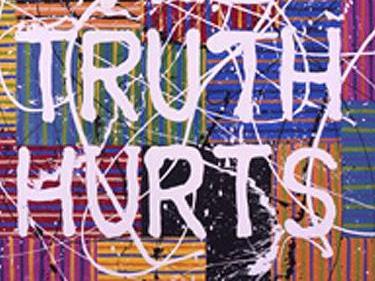Who’s in and who’s out is a question that the art world’s obsessed about. But the hierarchy of cultural visibility has significance beyond mere matters of gossip, media celebrity and fashion. It is a barometer of who is privileged to be heard in the competitive cacophony which shapes our concept of who we are.
The politics of gender, ethnicity, (dis)ability and public moral sensibilities continues to be our national soap opera. ‘Freedom of expression for whom?’ remains a thorny question, despite some policies which try to embrace diversity in access and representation.
There are subtle forms of ‘selection’ that weed out the winners from the losers. Most often ‘excellence’ criteria are used, but these can be based on narrow and opaque notions of value. It can move under-represented sectoral groups to question and subvert the dominant cultural paradigms. Let’s look at some examples.
Fascinating data about the representation of women in art has been researched by Elvis Richardson on her CoUNTesses website. She shows evidence that despite almost two thirds of graduates from Australian art schools being women, they are seriously under-represented in the public arenas of the arts world. She gives examples of major exhibitions like the Adelaide Biennale 2013 (under 30% women), shows in contemporary arts spaces (on average 39% women but varies greatly between them) and amongst winners of scholarships and prizes eg the current NSW Visual Arts Fellowship for Emerging Artists has 30% women (though historically it has been about 50%).Why is this important? Elvis answers, ‘Because we need to overcome the assumption that genius is gendered male, and that men represent all of humanity whereas women only represent the feminine.’
For culturally and linguistically diverse (CALD) communities the stats are not easy to find. In the Australia Council’s ‘More Than Bums on Seats: Australian participation in the arts’ report from 2010, the tables on multicultural engagement in the arts show that overall only about 35% of people born overseas creatively participated in at least one art form.Writer and director Teresa Crea who has a background in cross cultural performance as Artistic Director of Doppio Teatro and Parallelo Live Arts says, ‘Technically we are all free to express ourselves. But when the cultural representations mirrored back to us don’t reflect our diversity, we lose our sense of meaning. This is what bonds us into a community and affirms that we belong. Without it we are rendered non-existent.’
In response to the release of the Creative Australia national cultural policy, Julie Tipene-O’Toole, CEO of Kultour, (the national peak body committed to advancing cultural diversity in the arts in Australia) said, ‘The new policy fails to recognise artists from culturally diverse backgrounds and their right to freedom of expression in the form of art. Social inclusion is fundamental to the national creative voice and our national identity.’In relation to the changes recently made to the Australia Council Act, the sector had to petition quite hard to secure the inclusion in the Council’s functions, of responsibility to support Australian arts practice that reflects the diversity of Australia and Aboriginal and Torres Strait Islander arts practice, to promote community participation in the arts and to uphold and promote freedom of expression in the arts.
The more overtly aggressive form of exclusion through which divergent attitudes are kept under control is censorship. Over the years, artists have been censored for supposedly transgressing community standards in many areas including sedition, defamation, blasphemy, indecency, obscenity and public nuisance. The most recent cases are all centred around the nude human body.Perhaps the most odd is the decision by the Bundaberg Arts Festival to remove a competition entry by artist Dennis Mealor – a very straightforward ‘full frontal’ nude photo of a mature aged woman and artists’ model. Mealor was quoted on the ABC as saying, ‘The nude has been around for thousands of years since Greek times and before.’ The tolerance pendulum must have swung dramatically from the previous year when the same artist won with a nude portrait.
More complex were recent decisions by the director and owner of the Sydney Contemporary 13 art fair. Works by two artists were withdrawn from exhibition. Melbourne artist Paul Yore had been commissioned to produce a large vibrant installation of found pop culture detritus including images of certain contentious body parts, which was intended as a critique of consumer society. In the same exhibition but achieving less publicity was the banning of some images by a Queensland artist, Tyza Stewart whose nude adult and child self-portraits dealt with transgender identity. It’s a shame that the important social and ethical issues raised by these two artists were not given public airing.These and other questions about the limits on freedom of expression (including those that are self imposed) will be explored in the ‘Art Without Borders’ panel discussion between speakers who have expertise in each of the above areas, presented in Melbourne next week by the National Association for the Visual Arts (NAVA) and the Arts Law Centre of Australia, and will be moderated by Damien Carrick, presenter of the ABC’s Law Report.





